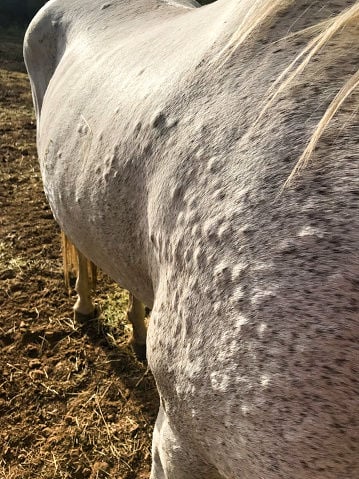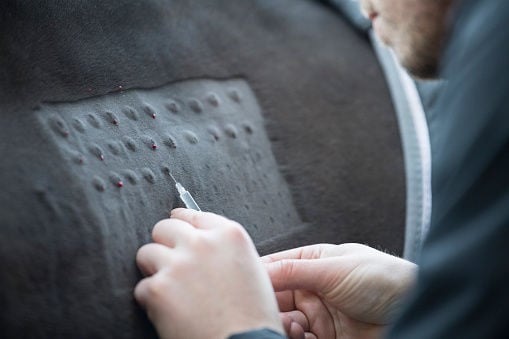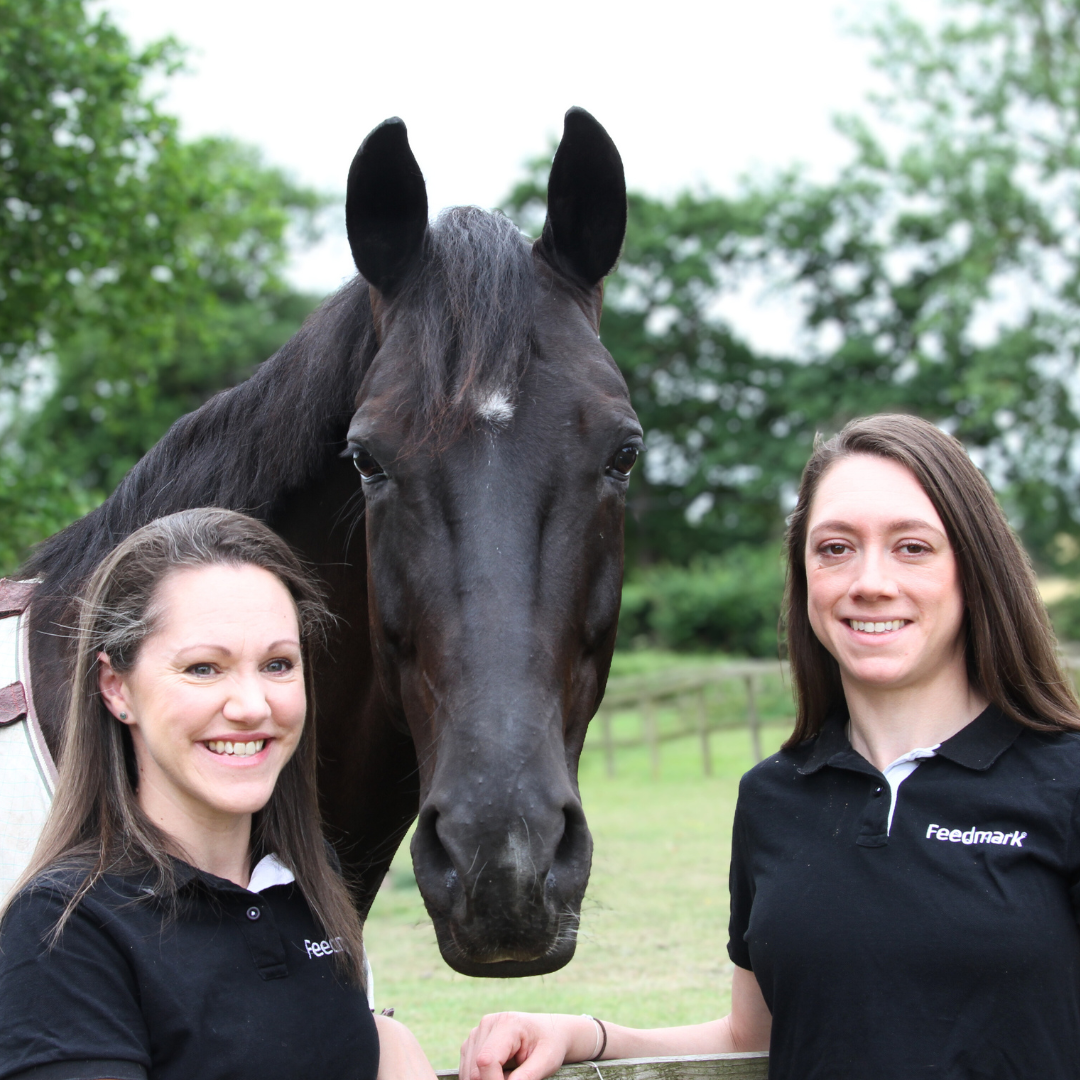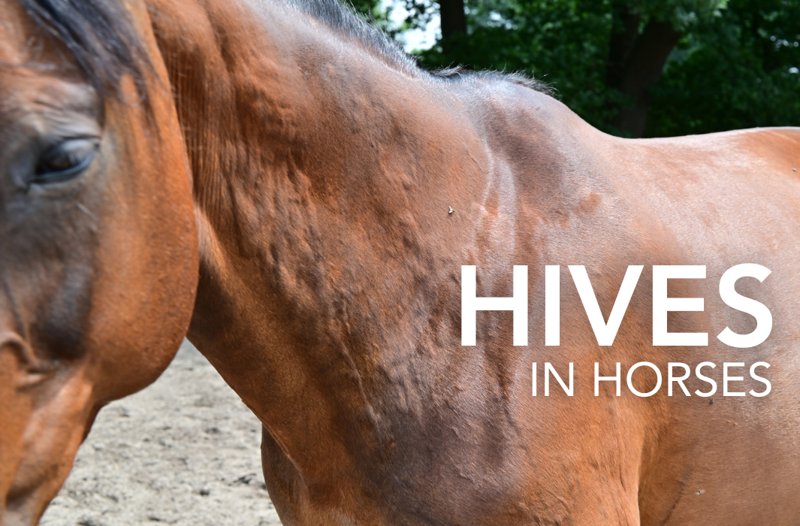Hives, or urticaria, are raised, fluid-filled bumps that appear on a horse’s skin, can be anywhere from 1-20 cm in diameter. Although they most commonly appear on the neck, back, flanks, legs, and eyelids, in severe cases they can also be seen on the mucous membranes that line the nose, mouth, eyes, and rectum.
Hives are an allergic response to triggers such as pollen, flies, insect bites and stings, certain medications, or something in the diet. Because they can appear anytime between 15 minutes and 24 hours after initial exposure, identifying the cause can be very difficult. Other factors - such as a change in routine, feed, stress, extreme temperatures, or intense exercise, can make a horse more susceptible to hives. As a result, a horse may react to something during a stressful period, but when the same stimulus is present under calmer conditions, may not react at all.
While hives can certainly be alarming to see, they are not always uncomfortable for the horse. However, in certain cases hives can be accompanied by itching.

An allergic reaction occurs when a foreign protein is detected in the body. Even though the trigger protein isn’t a threat, the body mounts an inappropriate immune response. This sets off a cascade of immune mediators, the most commonly known being histamine, which gives rise to symptoms such as hives. One of the first components of the immune system that is raised during an allergy is the antibody IgE, which can be detected in the blood in response to the specific allergen(s).
Allergen Testing
Blood testing for allergens commonly focuses on IgE antibodies to identify which protein is the trigger, although this type of testing in horses is still a relatively young science, so it’s not yet 100% reliable. Many asymptomatic horses have high levels of IgE’s, and their presence doesn’t always confirm an allergy. However, they may still be useful in determining likely culprits and guiding elimination testing.
Elimination testing involves removing one potential allergen at a time, while keeping everything else the same. For example, introducing new bedding for several weeks but changing nothing else in the horse’s environment or management. If the allergic response disappears, the original bedding can then be reintroduced to see whether the symptoms return, confirming it as the cause. For an elimination diet to rule out nutritional allergy, severe cases may be advised to remove all feeds and supplements except for forage. When the symptoms have gone, each component of the diet can then be added back in, waiting a minimum of two weeks between each addition to monitor for a response. During this process, it can also be helpful to keep a diary to record any behavioural changes, new field companions, stable mates, new batches of hay, exercise routine, weather, farrier and vet’s visits, or anything the horse may find stressful as these kinds of factors can also play into whether an allergic response is likely to occur.
In allergic reactions that are not severe enough to warrant veterinary intervention, supporting liver and skin health can be helpful. Histamine and other immune signalling molecules are metabolised by the liver, so supporting liver health is purported to be helpful in mediating total circulating levels of these chemical compounds. Supporting skin health and elasticity through the diet may also benefit horses with skin irritation by supporting resilience and repair. Where insect bites and stings are thought to be the main culprits, the following management strategies can help deter these pests:
- Fly rugs and regular application of fly repellent.
- Keeping horses stabled during evenings when flying insects are prolific.
- Regular poo-picking in fields.
- Keeping the muck heap well away from stabling.
As an additional measure, providing sulphuric compounds in the diet from sources such as garlic may help as well, along with other herbs known to be disliked by insects including rosemary, lemon peel, and fenugreek.

Conclusion
Whilst alarming in appearance, hives are thankfully often not as uncomfortable for the horse as they might appear. Various strategies to find the source of the allergic response exist however as they aren’t always 100% reliable, a multi-pronged approach might be required to identify the trigger. Supporting skin resilience and deterring pests can be helpful for many horses who struggle with hives, particularly during the summer months.



